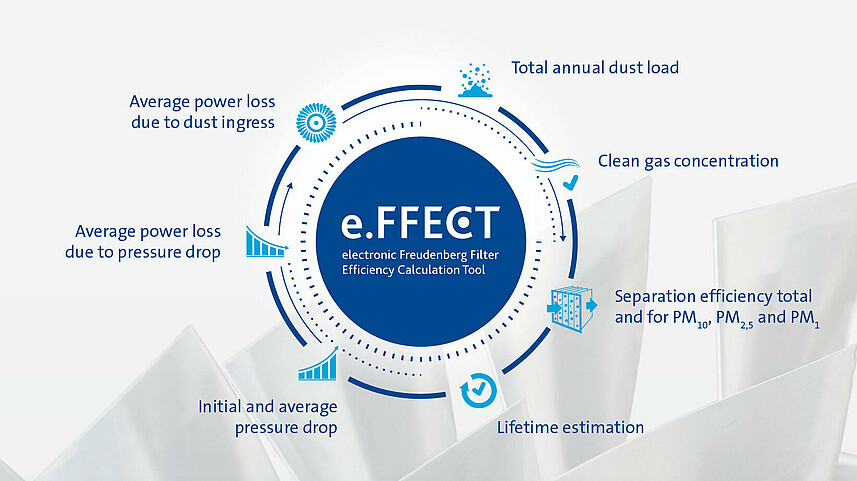The performance advantage for turbomachinery
Digital simulation software e.FFECT is expanding its range of services for increasing the functional reliability, efficiency and cost-effectiveness
Dust and moisture in the intake air of gas turbines and compressors cause deposits on the blade surfaces known as ‘fouling’, as well as corrosion damage in the hot gas area. This results in reduced performance and efficiency while maintenance effort and costs also increase. Multi-stage air intake filter systems provide protection and functional reliability – as long as they are precisely tailored to the requirements of the plant and the specific environmental conditions at the power plant location. The air filters used need to achieve the required service life so that filter changes can be carried out during planned maintenance intervals. With its simulation software, the electronic Freudenberg Filter Efficiency Tool, or e.FFECT for short, Freudenberg Filtration Technologies is able to configure individually optimized air filter systems tailored to the specific needs of turbomachinery operators.

e.FFECT maps the actual operation of a plant onto a digital model. Based on the site-specific requirements and relevant variables for efficient operation, the software tool transparently compares the filtration systems in question and determines the best solution. This is necessary because the more specifically a filter system is tailored to the respective plant requirements, the more efficiently, safely and economically it can be operated. In the case of turbomachinery, this typically involves the use of multistage filter systems: coordinated, sequentially connected combinations of pocket, cassette and/or cartridge filters. e.FFECT calculates the individual filtration efficiency of each filter stage and accumulates the quantities of dust.
One factor that influences the filtration system is the composition of the local ambient air. To ensure that the intake air filter system can be precisely designed, it is therefore important to know where a power plant is being operated. This may be in an urban conurbation with high levels of particulate matter, in a rural region with a high pollen count, near a humid coastline, or in an area characterized by drought and high concentrations of dust. To analyze the supply air at a specific location, e.FFECT either uses the ongoing measurements of national environmental authorities or Freudenberg itself determines the particulate concentrations in the immediate vicinity of the site.

e.FFECT makes potentials of performance gains visible
Process requirements and plant specifics, such as the intake mass flow of the turbomachine, are particularly important in determining the requirement profile for the filtration of the intake air. In the case of gas turbines, the main factors causing performance losses are fouling and the pressure drop of the particle-laden filters. e.FFECT uses the interaction of these calculation parameters to determine the optimum value for which the sum of the two system-inherent performance losses is the lowest.
Market Segment Manager Thomas Schroth explains: “For plant operators, intake air filtration is a valuable source of optimization potential. With the help of e.FFECT, our customers can be sure of implementing a site- and plant-optimized air filtration solution. Our simulation and calculation tool incorporates the knowledge gained from decades of filtration experience, data evaluation from more than 50 actual power plants, and numerous tests at Freudenberg Filtration Technologies. Power plant operators can immediately see the savings potential and the resulting monetary effect and are thus in a position to make meaningful comparisons. The advantages are obvious: a tailor-made filtration solution leads to lower maintenance requirements, longer service life and reduced operating costs. It combines increased functional reliability and plant availability with improved cost-effectiveness.”
Learn more











